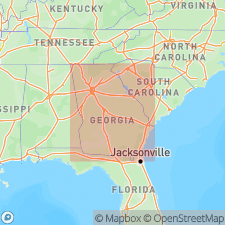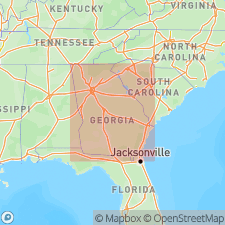
- Usage in publication:
-
- Danburg Granite
- Modifications:
-
- Named
- Dominant lithology:
-
- Granite
- AAPG geologic province:
-
- Piedmont-Blue Ridge province
Summary:
Danburg granite is an oval-shaped pluton that is coarsely porphyritic and occupies about 50 sq mi in the area. Apophyses of porphyritic granite cross-cut the bounding layered rocks of Little River Series. Porphyritic granite like that at Danburg has intruded granite gneisses of Kiokee Series (new) and earlier nonporphyritic granites near Appling.
Source: GNU records (USGS DDS-6; Reston GNULEX).

- Usage in publication:
-
- Danburg granite/pluton
- Modifications:
-
- Overview
- AAPG geologic province:
-
- Piedmont-Blue Ridge province
Summary:
Danburg described as coarse-grained and porphyritic. Similar to many other post-metamorphic granites of the southern Piedmont. Age is probably about 300 Ma.
Source: GNU records (USGS DDS-6; Reston GNULEX).
For more information, please contact Nancy Stamm, Geologic Names Committee Secretary.
Asterisk (*) indicates published by U.S. Geological Survey authors.
"No current usage" (†) implies that a name has been abandoned or has fallen into disuse. Former usage and, if known, replacement name given in parentheses ( ).
Slash (/) indicates name conflicts with nomenclatural guidelines (CSN, 1933; ACSN, 1961, 1970; NACSN, 1983, 2005, 2021). May be explained within brackets ([ ]).

